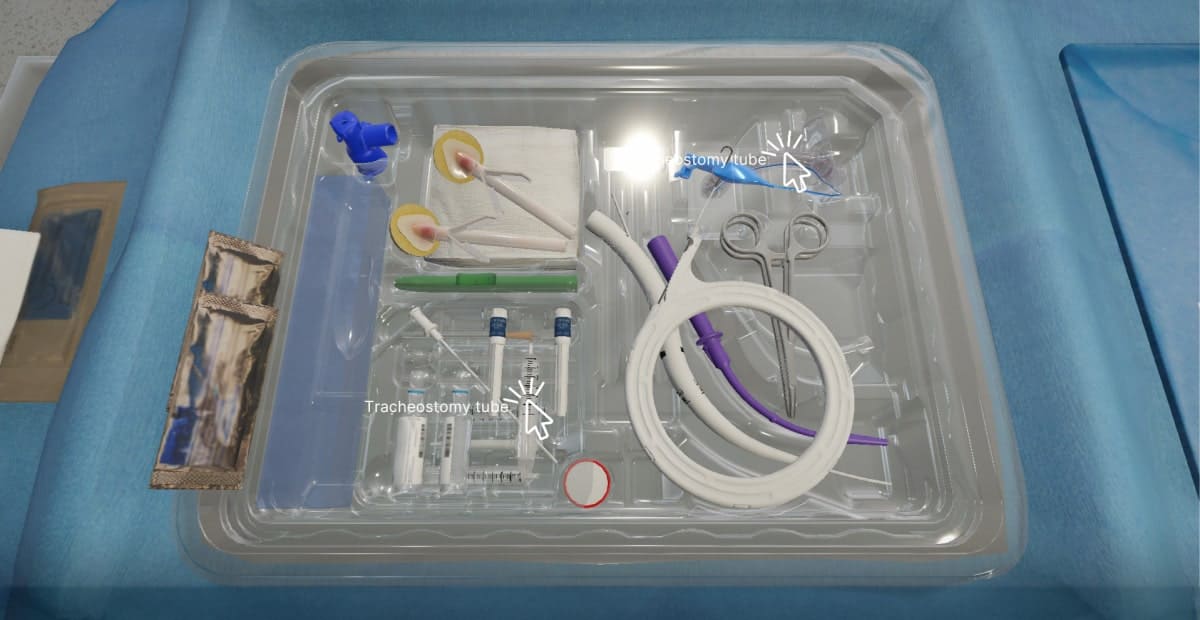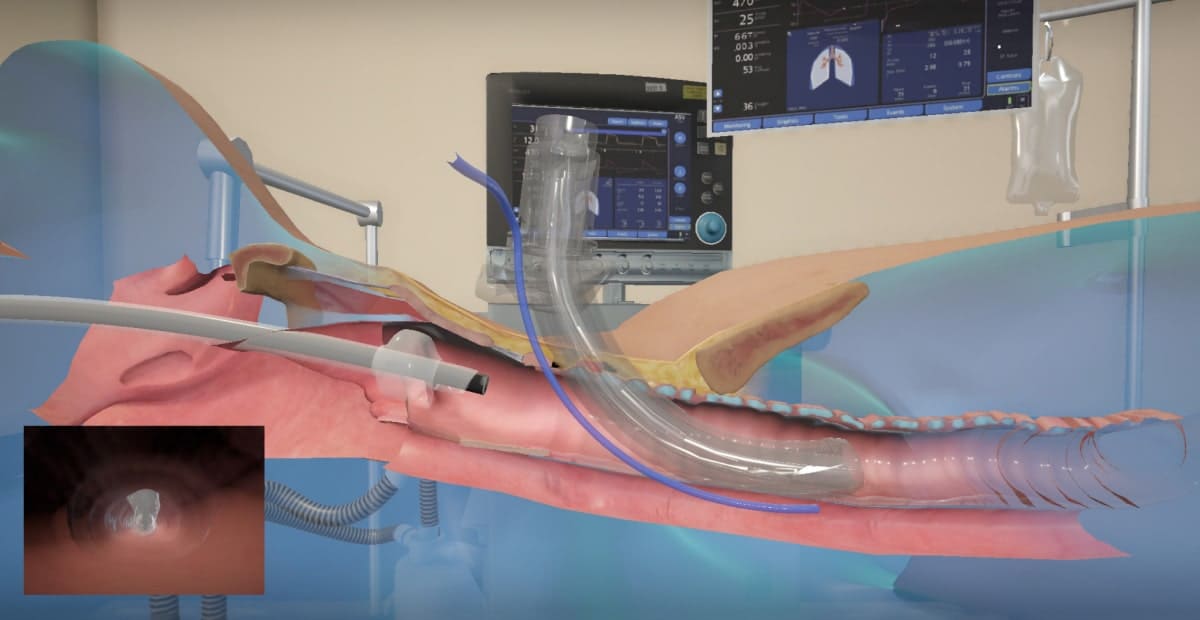Problem
According to statistics, approximately 300,000 patients require percutaneous dilatation tracheostomy (PDT) each year. The procedure facilitates the flow of air and oxygen into the lungs by creating an opening in the trachea. PDT often becomes necessary in case of an accident or emergency situation.
The success of the PDT procedure depends on several factors. Among them are the cause of the person’s inability to breathe, the patient's overall condition, and their position during the procedure. Additionally, quick response and professionalism of the doctor play a crucial role, especially in emergency cases. Each situation requires the use of appropriate tools tailored to the specific case.
The instruments used in percutaneous tracheostomy include:
- needle
- catheter
- guidewire
- tracheostomy tube
Each tracheostomy set is unique, so the manufacturer provides training to surgeons on the usage of PDT instruments. This preparation includes online courses, seminars and practice on training models. However, such training formats may not always provide a comprehensive understanding of the risks associated with tracheostomy or identify knowledge gaps that individual doctors may have. Training on actual patients without the necessary knowledge can pose potential dangers.
Our customer provides its services around the world, so they are trying to adapt training methods to consider the language and cultural nuances of specialists. Traditional learning approaches don’t address such a challenge well enough.

